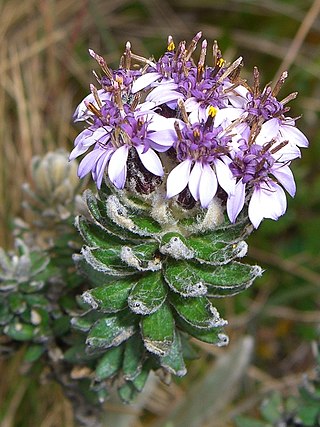
Diplostephium is a genus of trees and shrubs in the family Asteraceae.

Pithecellobium is a genus of flowering plants in the family Fabaceae. It includes approximately 23 species from the tropical Americas, ranging from Mexico to Peru and northern Brazil, including the Caribbean Islands and Florida.
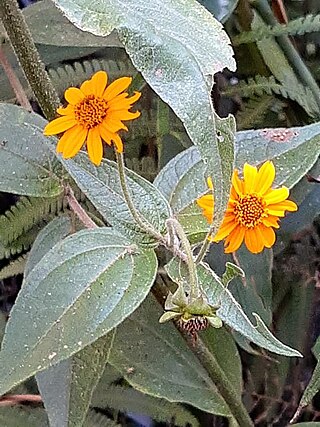
Elaphandra is a genus of flowering plants in the family Asteraceae.
Ericentrodea is a genus of South American flowering plants in the family Asteraceae.
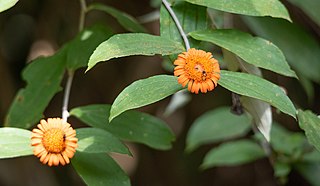
Lycoseris is a genus of Central and South American flowering plants in the family Asteraceae.
Pappobolus is a genus of flowering plant in the family Asteraceae native to the Andes Mountains of Colombia, Ecuador, and Peru.

Viguiera is a genus of flowering plants in the family Asteraceae. It contains around 19–40 species, which are commonly known as goldeneyes and are native to the New World. These are herbs to bushy shrubs that bear yellow or orange daisy-like flowers.
Dipterocypsela is a genus of flowering plants in the family Asteraceae.

Hymenostephium is a genus of flowering plants in the family Asteraceae. It includes herbs and slender shrubs that occur from Mexico through to Venezuela and north-western Argentina.
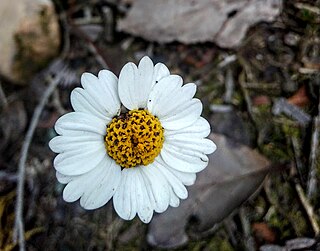
Sabazia is a genus of Colombian and Mesoamerican plants in the tribe Millerieae within the family Asteraceae.
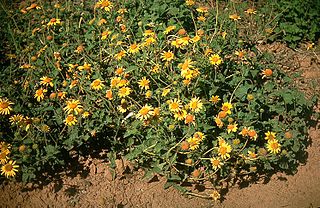
Simsia is a genus of flowering plants in the tribe Heliantheae within the family Asteraceae. It includes annuals, herbaceous perennials, and shrubs. They range from the western United States south through Central and South America to Argentina, with the center of diversity occurring in Mexico. The genus is named for British physician and botanist John Sims (1749–1831). Although some species are relatively rare, others have become common weeds that line the roadsides and fields of Mexico, often forming dense stands mixed with Tithonia and other Asteraceae. Some species are known by the common name bushsunflower.
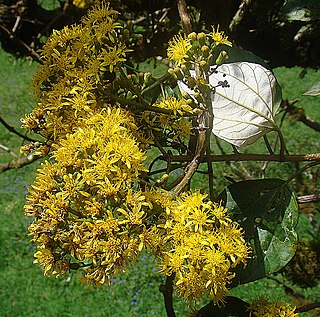
Sinclairia is a genus of Latin American plants in the tribe Liabeae within the family Asteraceae.

Montanoa is a genus of flowering plants in the tribe Heliantheae, within the family Asteraceae.
Otopappus is a genus of flowering plants in the tribe Heliantheae within the family Asteraceae, primarily Mesoamerican but with one species from Jamaica.
Oxycarpha is a genus of Colombian flowering plants in the tribe Heliantheae within the family Asteraceae.

Oyedaea is a genus of South American flowering plants in the tribe Heliantheae within the family Asteraceae.
Steiractinia is a genus of South American plants in the tribe Heliantheae within the family Asteraceae.
Blakiella is a monotypic genus of flowering plants in the family Asteraceae, containing the single species Blakiella bartsiifolia. It is native to northeastern South America, where it occurs in Colombia and Venezuela.
Sidney Fay Blake (1892–1959) was an American botanist and plant taxonomist, "recognized as one of the world's experts on botanical nomenclature."

The Santa Marta páramo (NT1007) is an ecoregion containing páramo vegetation above the treeline in the Sierra Nevada de Santa Marta mountain range on the Caribbean coast of Colombia. The isolated position of the range has allowed unique species to evolve. Some are related to those found in Central America and the Caribbean coastal areas, and some to species from the Andes. The habitat is relatively stable, but has been drastically changed from the original by long-term human activity.











